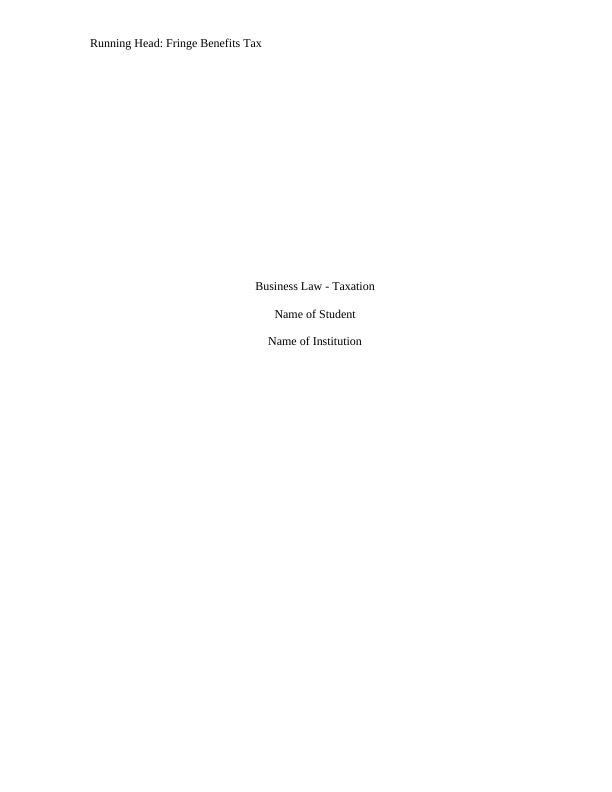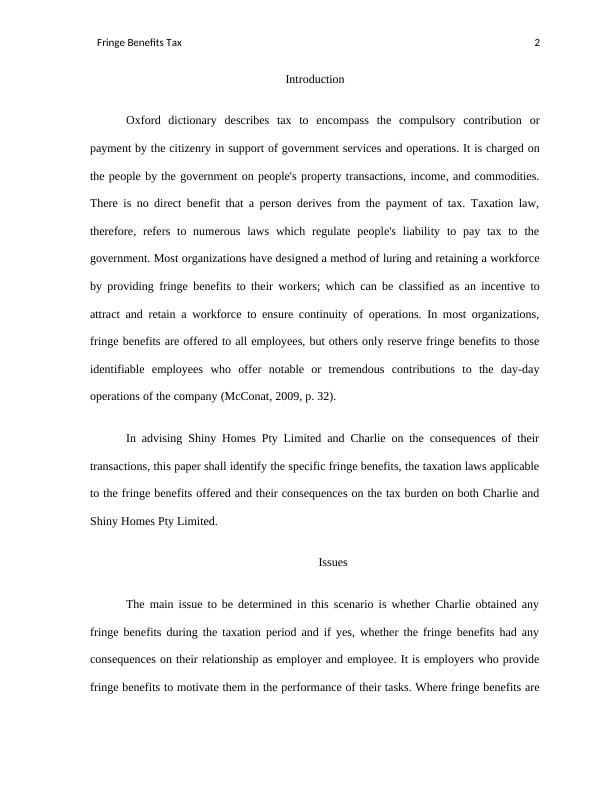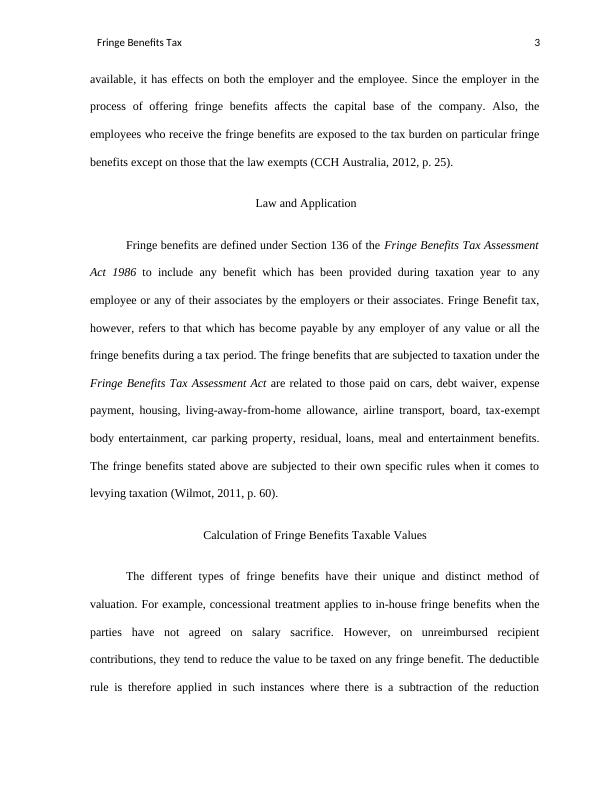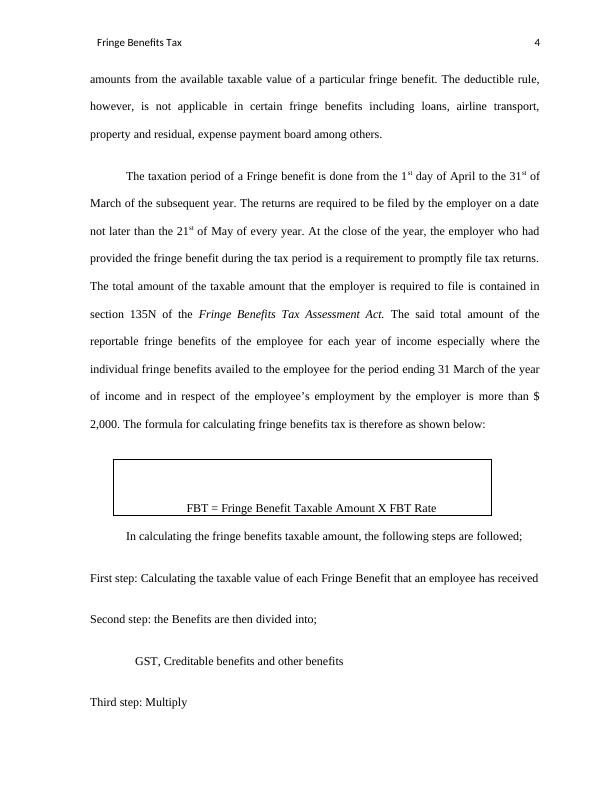Ask a question from expert
Running Head: Fringe Benefits Tax
16 Pages3841 Words254 Views
Added on 2019-10-30
About This Document
In advising Shiny Homes Pty Limited and Charlie on the consequences of their transactions, this paper shall identify the specific fringe benefits, the taxation laws applicable to the fringe benefits offered and their consequences on the tax burden on both Charlie and Shiny Homes Pty Limited. The fringe benefits that are subjected to taxation under the Fringe Benefits Tax Assessment Act are related to those paid on cars, debt waiver, expense payment, housing, living-away-from-home allowance, airline transport, board, tax-exempt body
Running Head: Fringe Benefits Tax
Added on 2019-10-30
BookmarkShareRelated Documents
End of preview
Want to access all the pages? Upload your documents or become a member.
Report On Case of Taxation Law
|13
|2560
|39
Assignment on Taxation Law
|14
|3084
|39
Australian Taxation Law - PDF
|12
|2448
|99
Benefits Tax Assessment Act 1986
|13
|2290
|68
Fringe Benefits Tax Assessment Act 1986 Taxation Law Assignment
|9
|2523
|36
Answer to question 1: Taxation Law Name of the Student Name of the University Authors
|12
|2450
|268



